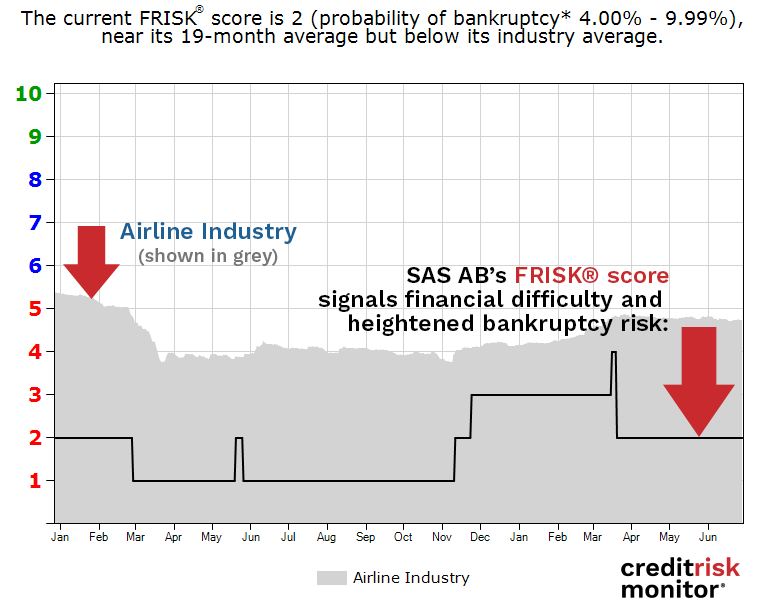Scandinavian airliner SAS AB could soon be sending out a Chapter 11 S.O.S. If you're one of their creditors, what proactive steps will you take to avoid a major write-down if bankruptcy comes?
SAS AB’s FRISK® score has sunk to a “2” in recent months, as air travel, in general, has been grounded in large part due to fears raised by the COVID-19 pandemic. Even if the number of people vaccinated is growing globally, high numbers of new cases and strict travel restrictions continue to impact society and slow recovery for the airline industry. The company presented a net loss of €442 million in the first half of its fiscal year (November 2020 - April 2021).

Our FRISK® Score model incorporates four powerful risk inputs:
- “Merton”-type model of stock market capitalization and volatility
- Financial ratios, including those used in the Altman Z”-Score Model
- Agency ratings
- Website click pattern data from CreditRiskMonitor® subscribers, representing key credit decision-makers at nearly 40% of current Fortune 1000 companies plus thousands of other large companies worldwide
Since the start of 2017, the FRISK® Score’s rate of success in capturing public company bankruptcy is 96%. In any given year, you can count on one hand the times we miss – and in those outlier cases, the circumstances deal with unusual, unforeseen events such as natural disasters and CEO fraud.
Download the free report to learn more.
About High Risk Reports
Our High Risk Reports feature companies that are exhibiting a significantly high level of financial distress, as indicated by our proprietary FRISK® Score.
The reports highlight the factors that have pushed a company's score lower on the "1" (worst) to "10" (best) FRISK® Score, which is 96% accurate in predicting bankruptcy over a 12-month period. The High Risk Reports also includes analysis on financial indicators such as the company’s DBT index, stock performance, financial ratios and how it is performing relative to its industry peers.
The ultimate goal of the High Risk Report series is two-part: provide an early warning for those doing business with an increasingly distressed company and inform of the many signals that should be examined when assessing financial risks.